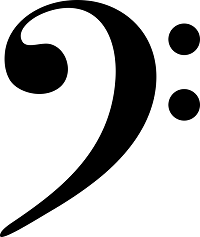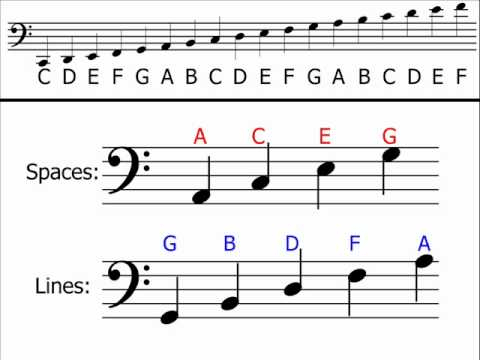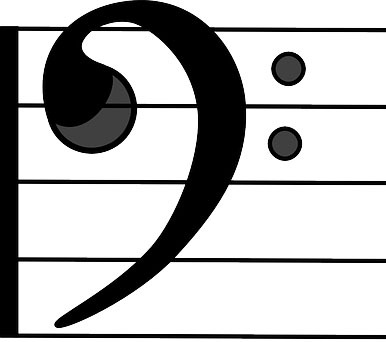F Clef or Bass Clef What is it
The F Clef also known as the Bass Clef is the first symbol that appears at the beginning of sheet music
This clef is placed on every line of music showing the notes which will be sung or played by voices and instruments that can achieve lower notes
The Bass Clef is also called the “F Clef” because because of the fact the symbol has two dots above and below the fourth line
This line corresponds to the note, F. Once you identify this note, it is easy to find the other notes. Simply move up or down the musical alphabet, A-B-C-D-E-F-G
After the treble clef it’s the most commonly used clef due to the wide range of instruments that use it
F Clef Instruments
Instruments that use the F Clef are:
The cello, euphonium, double bass, bass guitar, bassoon, contrabassoon, trombone, baritone horn, tuba, and timpani
It is also used for the lowest notes of the horn, and for the baritone and bass voices
Tenor voice is notated in bass clef when the tenor and bass are written on the same stave
Bass Clef is the bottom clef in the grand stave for harp and keyboard instruments
The contrabassoon, double bass, and electric bass sound an octave lower than the written pitch; no notation is usually made of this fact, but some composers/publishers will place an “8” beneath the clef for these instruments on the conductor’s full score to differentiate from instruments that naturally sound within the clef
Theory
The F Clef symbol or Bass Clef symbol is represented by the following:

**This is only an example, more notes can appear **

History Lesson
Where did the F Clef (Bass Clef) originate from?
No one really knows who invented this useful clef however we may get some idea from the following:
The history of Western musical notation describes an effort toward the development of a simple, symbolic representations of pitch and rhythm
It begins near the end of the 9th century when notation for the Plainsong of the Western Church, better known as Gregorian Chant, was first recorded with “neumes”
These were simple dashes or dots above lyrics that indicated a relative change in pitch
At the end of the 10th century, musical scribes increased the precision of his early notation by introducing a horizontal line to indicate a base pitch
The pitch of this line was indicated by a letter at its start, typically F or C and, as higher range songs become more common, G
The different clefs are designed so most of singers’ notes will fall on the lines or spaces in their range
Neumes were no longer relative only to one another, but to a standard
This was the beginning of the musical staff and hence the start of modern western music
Finally
I hope you have found this useful
Feel free to leave comments or questions below
If you’d like to further your musical education for either guitar lessons or piano lessons then please get in touch
